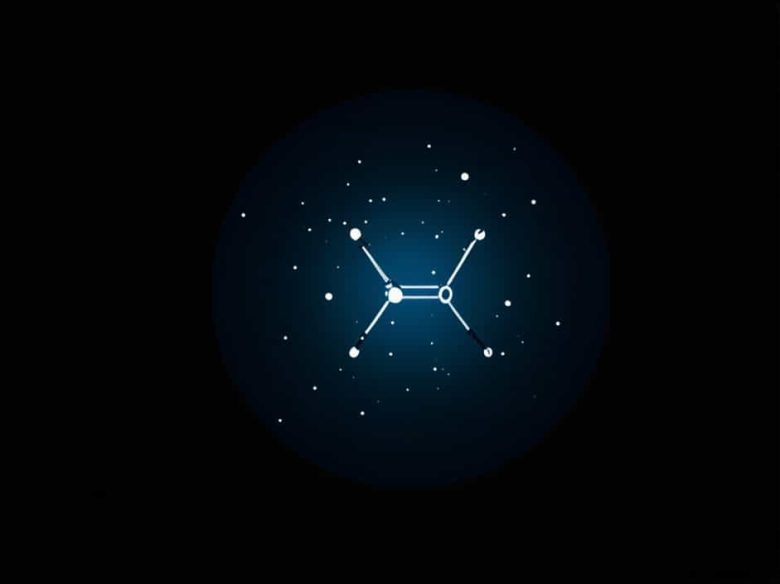The Big Dipper is one of the most recognizable star patterns in the night sky. Many people mistake it for a constellation, but it is actually part of a larger constellation called Ursa Major (the Great Bear).
This bright, easily identifiable group of stars has been used for centuries as a navigation tool, a seasonal marker, and a source of inspiration for mythology and folklore. But what exactly is the Big Dipper, and why is it so important?
In this topic, we will explore the history, significance, and scientific facts about the Big Dipper.
What Is the Big Dipper?
The Big Dipper is a prominent asterism, meaning it is a recognizable pattern of stars that is not a full constellation by itself. It consists of seven bright stars that form a shape resembling a ladle or a spoon.
The Seven Stars of the Big Dipper
The Big Dipper is made up of the following stars:
- Dubhe – One of the pointer stars, helps locate the North Star
- Merak – The second pointer star, also used for navigation
- Phecda – Forms part of the bowl of the dipper
- Megrez – The faintest star in the asterism, connecting the bowl and handle
- Alioth – The brightest star in the Big Dipper
- Mizar – A famous double star with Alcor
- Alkaid – The tip of the handle
These stars are all part of the Ursa Major Moving Group, a collection of stars that share a similar motion through space.
Is the Big Dipper a Constellation?
Many people believe that the Big Dipper is a constellation, but it is actually part of the Ursa Major constellation.
Ursa Major: The Great Bear
The Big Dipper forms the back and tail of Ursa Major, a large constellation that represents a great bear in mythology. The rest of the bear’s body is formed by fainter stars that extend beyond the Big Dipper.
The Little Dipper and Ursa Minor
A similar star pattern, the Little Dipper, is part of Ursa Minor, the Little Bear. The North Star (Polaris) is the brightest star in the Little Dipper and is often located using the Big Dipper’s pointer stars.
The Big Dipper as a Navigation Tool
For centuries, travelers and sailors have used the Big Dipper to find their way at night.
Finding the North Star
The two stars at the edge of the Big Dipper’s bowl, Dubhe and Merak, are called the Pointer Stars. By drawing an imaginary line through them and extending it outward, you can find Polaris, the North Star.
Since Polaris is almost directly above the Earth’s North Pole, it is a reliable guide for navigation.
Determining Time and Seasons
The position of the Big Dipper changes throughout the year. Ancient civilizations used its location in the sky to track seasonal changes, helping them with agriculture and hunting.
Mythology and Legends of the Big Dipper
The Big Dipper has played a role in many mythologies and folktales across different cultures.
Greek Mythology
According to Greek legend, the Big Dipper is part of Ursa Major, which represents Callisto, a nymph who was transformed into a bear by Zeus.
Native American Legends
Many Native American tribes saw the Big Dipper as a bear being chased by hunters. The changing position of the stars throughout the year was thought to represent the hunters pursuing the bear across the sky.
Chinese Astronomy
In ancient China, the Big Dipper was considered a heavenly chariot and played an important role in astrology and timekeeping.
Scientific Facts About the Big Dipper
While the Big Dipper appears to be a flat pattern of stars, its stars are actually at different distances from Earth.
Distances of the Big Dipper Stars
| Star | Distance from Earth (Light-Years) |
|---|---|
| Dubhe | 123 |
| Merak | 79 |
| Phecda | 83 |
| Megrez | 81 |
| Alioth | 82 |
| Mizar | 83 |
| Alkaid | 101 |
Although these stars appear close together in the sky, they are spread out in space, forming a three-dimensional structure.
The Mizar-Alcor Star System
One of the most famous stars in the Big Dipper is Mizar, which has a companion star named Alcor. This pair was used in ancient times as a vision test—if someone could see both stars, they were said to have good eyesight.
Today, astronomers know that Mizar and Alcor are part of a complex multiple-star system with at least six stars orbiting each other.
How to See the Big Dipper
The Big Dipper is visible throughout the year in the Northern Hemisphere.
Best Viewing Conditions
- The best time to see the Big Dipper is on a clear, dark night, away from city lights.
- It is visible from most locations in the Northern Hemisphere, even in urban areas with light pollution.
Seasonal Changes
- Spring: The Big Dipper is high in the sky in the evening.
- Summer: The Big Dipper starts to dip lower in the sky.
- Fall: The Big Dipper appears closer to the horizon.
- Winter: The Big Dipper is seen low in the north but still visible.
Since the Big Dipper is circumpolar for most observers in the Northern Hemisphere, it never fully sets and can be seen all year round.
The Big Dipper in Modern Astronomy
Today, the Big Dipper continues to be a valuable tool for both astronomers and casual stargazers.
Scientific Research
- The stars in the Big Dipper belong to the Ursa Major Moving Group, an important group of stars that share a common origin.
- Studying these stars helps astronomers understand the evolution of star clusters.
Educational Importance
- The Big Dipper is often one of the first star patterns that people learn to recognize.
- It serves as a starting point for finding other constellations and celestial objects.
Why the Big Dipper Matters
The Big Dipper is more than just a group of bright stars—it is a key part of astronomy, navigation, and mythology.
From guiding travelers in ancient times to helping modern astronomers understand the movement of stars, the Big Dipper remains one of the most important and beloved star patterns in the sky.
Whether you are an experienced stargazer or just starting to explore the night sky, the Big Dipper is a great place to begin your astronomical journey.



